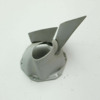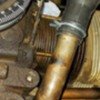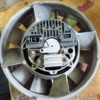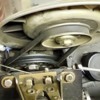Inspecting the dipstick, I spotted a very tiny '150C' cast into the plastic casing at the top and, testing it with a gas torch it read 0 ohms until it reached temp (presumably 150C/ 300F, although I've no real way of knowing) then generated a reading, so obviously a warning light switch rather than a gauge sensor.
Looking at the 911 fan air guide/ Yoda Ears fabrication (thanks @DannyP), in theory it could be a reasonable task to create out of sheet metal - create a cone with tabs to allow mounting to alternator, then bolt or rivet vanes to the cone. The problem is knowing how sturdy to build it - I'm betting there's quite a force of air being blown down at high revs. As Danny says - with the 911 fan it's all about air pressure. Having seen this, I googled and found a useful blog of a guy refurbishing his 911 broken air guide - this image taken from his site to show just how it mounts on the alternator (picture credit: joe-engineer.com)

Here's the back of my alternator/fan to show where it would have to be attached.

So, that's one to ponder for the moment. I have an old friend who does some fabrication so I may have to give him a call and see if he can help.
Another task to ponder is the oil breather system. Currently there is a large stainless steel breather box mounted in engine bay (nearest the bumper). 
As well as the two vents at the top of the box, it has hoses going to:
- Left side rocker cover
- Right side rocker cover
- Crankcase - there's a fitting in the fan base that replaces the old oil filler casting.
- Oil filler tube - it taps into a bodged fitting screwed into the side of the plastic filler funnel which sits atop the oil filler pipe.
My plan is simply to clean everything up and replace the hoses with new hoses. So, is this a good idea or not? I'm also considering hoses with slightly smaller ID - they're a loose fit on the 11mm (7/16") diameter fittings, causing more oil leaks! There's hardly one part of the underside of the engine that is not covered in oil from one leak or another..
Tied in with the above task is the oil filler tube - it's far too short, causes oil leaks and is not easy or convenient to use for it's designed purpose - to pour oil into the engine.
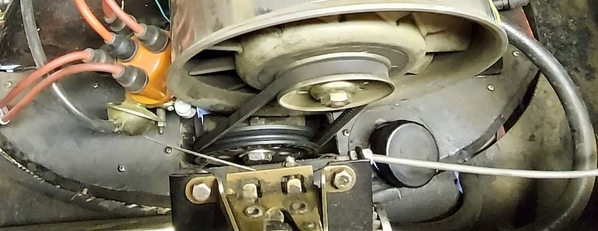

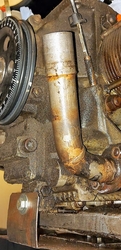
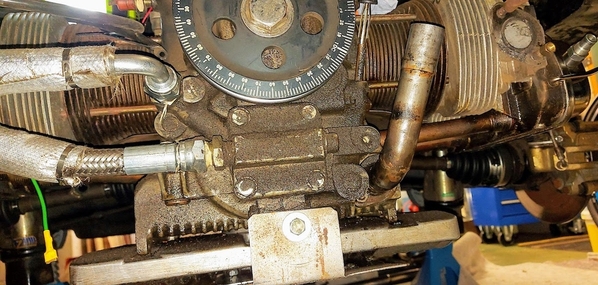 As you can see it's already been welded/modified to fit. It could do with being 3" taller. Is this a modified Type 4 filler? Any suggestions on how I can improve this situation please?
As you can see it's already been welded/modified to fit. It could do with being 3" taller. Is this a modified Type 4 filler? Any suggestions on how I can improve this situation please?
As always seems to be the way in car maintenance, my thread is a prime example of "While I'm in there" scope creep. :-)



